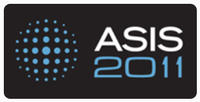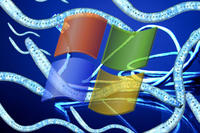-
Strong growth for mobile phone embedded biometric security solutions
New study says that the conditions are now right to create a strong market for mobile phone embedded biometric security solutions; the current global user base of four million users in 2011 is set to grow to 39 million users by 2015
-
-
ISPs asked to help fight hackers

DHS and the Department of Commerce are considering a proposal that would request assistance from Internet-service providers in combatting computer viruses known as botnets
-
-
ASIS 2011 -- combating cyber extremists

At this year’s ASIS International conference, security experts will explore the effect of the Internet on terrorism, how extremist organizations are using it, and what can be done to stop it; the web has largely proven to be a boon to society, but malicious actors like terrorists have used the Internet to disseminate their radical ideas, recruit new members, and share weapons and bomb building training manuals; terrorist websites have proven to be reliable sources for intelligence as well as dangerous meeting places, but shutting them down has proven to be more complicated than anticipated
-
-
Cyber attacks on U.S. are becoming more lethal
The head of the U.S. Cyber Command said that cyber attacks on the United States are escalating from large-scale theft and disruption of computer operations to more lethal attacks that destroy systems and physical equipment
-
-
Report warns U.S. unprepared for cyber attacks
A new report warns that the United States lacks the capabilities to defend against expanding cyber threats; the report found, “The impact has increased in magnitude, and the potential for catastrophic collapse of a company has grown,” yet the businesses community has failed to understand that
-
-
Safeguarding the Internet of tomorrow
The recommendations of a high-level cybersecurity summit held Belfast include developing self-learning, self aware cyber security technologies, protecting smart utility grids, and enhancing the security of mobile networks. The summit concluded that these are among the top research priorities needed to safeguard the Internet of tomorrow
-
-
Measuring effect of Wi-Fi attacks
Researchers have developed a way to measure how badly a Wi-Fi network would be disrupted by different types of attacks — a valuable tool for developing new security technologies
-
-
The "lost decade" of cybersecurity: adversaries outpace cyber-defenses
Anup Ghosh, the founder and CEO of Invincea, a firm that specializes in developing cybersecurity solutions, discusses the failures of the U.S. government in cybersecurity, emerging technologies that can help keep networks safe, and the havoc that terrorists can wreak via a cyberattack
-
-
General Dynamics teams up with Virginia Tech to bolster cybersecurity
Defense giant General Dynamics’ cybersecurity division has teamed up with Virginia Tech to help strengthen the nation’s cybersecurity research capabilities; on Wednesday, the company announced that its Advanced Information Systems branch will assist Virginia Tech with its new Security and Software Engineering Research Center (S2ERC)
-
-
WikiLeaks hit by cyberattack
On Tuesday night, the whistle-blower site WikiLeaks suffered from a cyberattack that crashed its homepage; the attack comes shortly after the group released nearly 134,000 additional State Department cables
-
-
New Windows worm spreading by exploiting weak passwords

A new Windows worm is spreading through company networks by exploiting weak passwords; the worm, dubbed “Morto” spreads using RDP, or Remote Desktop Protocol, the Microsoft-made protocol for controlling one computer by connecting to it from another
-
-
Chinese TV shows cyber-attack software
A Chinese government TV station, perhaps inadvertently, shows a government cyberattack aimed at Falun Gong computers; the video identifies the software as being written by the Electrical Engineering University of the People’s Liberation Army; the video — which has been removed from the TV station’s Web site — provides direct evidence of Chinese government involvement in cyberattacks
-
-
Penn State offers online minor in homeland security
Penn State is the latest to join the handful of educational institutes offering a minor in homeland security; the degree is available online and is designed to provide students with the skills needed to enter the homeland security field
-
-
TSA Blackberries vulnerable

The Transportation Security Administration’s (TSA) Blackberry mobile devices are vulnerable to cybersecurity threats due to a backlog of security patches and their configurations; with these vulnerabilities, hackers could exploit unsecured wireless networks to monitor data transmissions, execute denial of service attacks, alter messages, or even impersonate legitimate users to steal sensitive data provided by airline passengers
-
-
Rampant insider hacking at U.S. immigration agency

A yearlong investigation by the DHS Inspector General has revealed multiple instances of insider hacking at U.S. Citizenship and Immigration Services (USCIS); the inspector general found that employees had accessed management-level email and other confidential files
-
- All
- Regional
- Water
- Biometrics
- Borders/Immig
- Business
- Cybersecurity
- Detection
- Disasters
- Government
- Infrastructure
- International
- Public health
- Public Safety
- Communication interoperabillity
- Emergency services
- Emergency medical services
- Fire
- First response
- IEDs
- Law Enforcement
- Law Enforcement Technology
- Military technology
- Nonlethal weapons
- Nuclear weapons
- Personal protection equipment
- Police
- Notification /alert systems
- Situational awareness
- Weapons systems
- Sci-Tech
- Sector Reports
- Surveillance
- Transportation
Advertising & Marketing: advertise@newswirepubs.com
Editorial: editor@newswirepubs.com
General: info@newswirepubs.com
2010-2011 © News Wire Publications, LLC News Wire Publications, LLC
220 Old Country Road | Suite 200 | Mineola | New York | 11501
Permissions and Policies
Editorial: editor@newswirepubs.com
General: info@newswirepubs.com
2010-2011 © News Wire Publications, LLC News Wire Publications, LLC
220 Old Country Road | Suite 200 | Mineola | New York | 11501
Permissions and Policies
